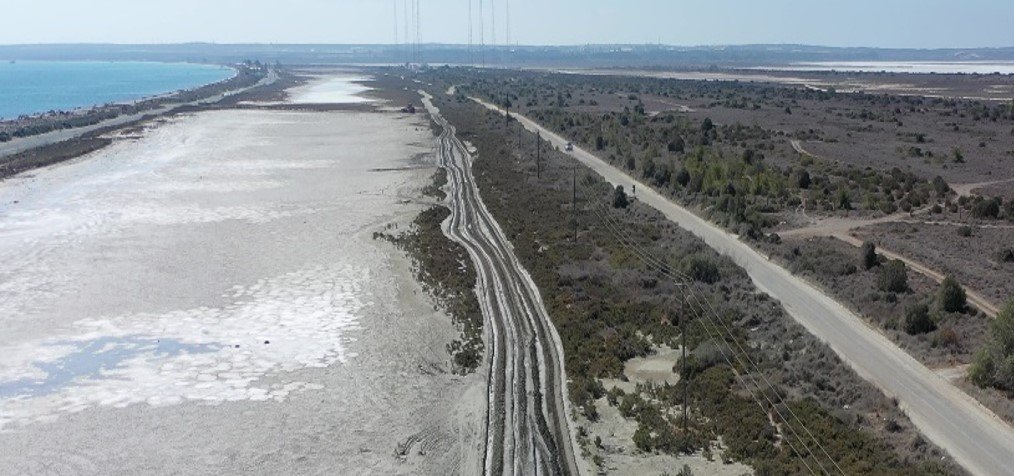A period of extensive action for the restoration and protection of the environment that started on Monday, July 12, 2021 in Lake Makria in Zakaki and in the broader Lady’s Mile area and Akrotiri Salt Lake was completed today.
The work was carried out within the framework of the MedIsWet project which started in October 2020 and will end in the autumn of 2022. The main goal of the project is to restore Mediterranean wetlands of utmost importance for biodiversity. The MedIsWet project is co-financed by the Swiss foundation “MAVA”, Foundation For Nature.
The wetland selected for restoration is the vital area of Lady’s Mile, which is part of the wider Akrotiri wetland system. The programme partner for Cyprus is Terra Cypria – The Cyprus Conservation Foundation, which undertook the coordination of the action, in cooperation and with co-financing from the Sovereign British Bases and the Limassol-Amathus Sewerage Board.
Specifically, within the broader area of Lady’s Mile, the following actions have been carried out:
- Removal and management of about 400 cubic meters of garbage from the very sensitive areas of Akrotiri Salt Lake,
- Repair and upgrade of the birdwatching hide of Lake Makria, aiming to reduce the disturbance to birds and to improve and enhance the bird-watching experience as much as possible,
- Installation of a surveillance camera at Lake Makria for the detection of any illegalities,
- Cleaning and management of the reeds at Lake Makria in Zakaki for the benefit of the species that use the habitat, but also to facilitate bird watching,
- Blocking of the uncontrolled accesses within the most environmentally sensitive areas of Akrotiri Salt Lake using rock boulders in order to achieve the restoration of the wetland, and especially the places that have suffered the most damage, in combination with indirect encouragement to the public to use only the main access road to Lady’s Mile beach along the coastline. At this point, we would like to express our warmest thanks to the Cyprus Ports Authority for the provision of the rock boulders that had been located around the facilities of the new port of Limassol,
- Mechanical excavation of the points of Akrotiri Salt Lake that were illegally used as roads until recently, in order to help and at the same time to accelerate their restoration,
- Mechanical destruction of “motocross” tracks which were illegally created within the area of Lady’s Mile.
The area of Lady’s Mile is part of the two protected areas, the “Special Protection Area” of Akrotiri and “Special Area of Conservation” of Akrotiri with a protection regime corresponding to that governing the Natura 2000 areas of the Republic of Cyprus. Part of it is protected by the RAMSAR Convention for the protection of wetlands of international importance.
In addition, the area has exceptional ecological value, while supporting many rare, vulnerable or endangered species or subspecies of plants or animals. It hosts a large number of migratory birds of international importance, offering them habitat for rest, breeding and feeding. It is an important migration station, and the most important migration route for birds of prey in Cyprus. More than 300 species of birds have been recorded, of which more than 90 are listed in Annex I to Directive 2009/147/EC on the Conservation of Wild Birds. This is the largest number of protected species recorded in an area in Cyprus. At least 9 species of strictly protected birds breed in the area. It hosts the largest numbers of birds in Cyprus and very large numbers of wintering waterfowl. It is a home to a particularly significant subset of the Eastern Mediterranean flamingo population (Phoenicopterus ruber) (averaging 6000 individuals per year, corresponding to 2% of the Eastern Mediterranean/South Asia population).
In addition, it hosts 29 types of natural habitats, 26 of which are included in the Annex of the Directive 92/43/EEC for the conservation of natural habitats and of wild flora and fauna. It is also one of the most important areas for the flora of Cyprus. More than 800 groups of plants have been recorded in the area, 32 of which are included in the Red Book of the flora of Cyprus, of which 13 are rare and/or endemic.
Despite its great ecological importance, the area is particularly affected by human activities, such as uncontrolled driving and reckless waste dumping. In addition, Lady’s Mile Beach, which is also a sea turtle spawning beach, hosts thousands of visitors, especially during the summer months. In general, the area receives a lot of pressure, which if not stopped and regulated will certainly be irreparably degraded over the next few years.
Within the next months and until the end of the programme, several other restoration, conservation and educational activities are planned in the area of Lady’s Mile and Akrotiri salt lake, which include:
- Additional garbage cleaning in the broader Lady’s Mile area,
- Further upgrade of the birdwatching hide of Lake Makria with the installation of informational signs with the species that the habitat hosts,
- Design and installation of explanatory signs in the broader Lady’s Mile area,
- Additional cleaning of the Lake Makria reeds ,
- Installation of surveillance cameras in cooperation with the authorities of the Sovereign British Bases for the detection and prosecution of anyone entering the Salt Lake illegally, dumping waste in the area and any other illegal activities.
Dr. Stathis Theofilou, who is coordinating the Project, stated: “The work we undertook to carry out in the area is not only extremely important for the very sensitive ecosystem of the area, but also for improving the experience of the visitors. At the same time, however, it is very important for everyone to understand and appreciate the environmental value of the area. We can all help towards its protection in the long run with simple actions, such as driving only on the main road and not in the habitats and sand dunes, picking up our rubbish before leaving the beach and not throwing garbage in the area in general, and not camping and lighting fires on the beach at night.”




